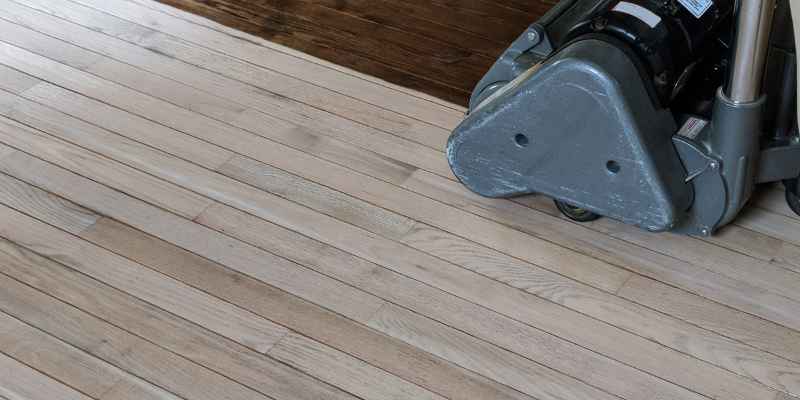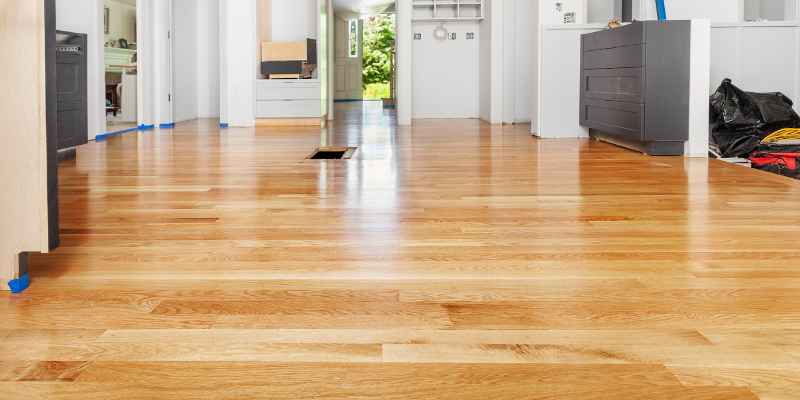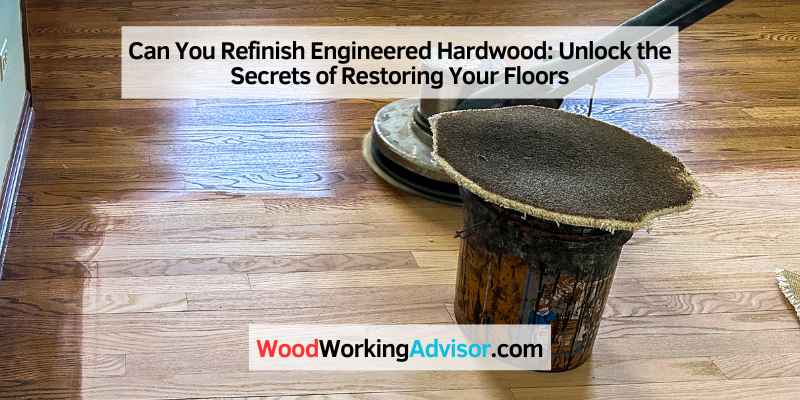Yes, you can refinish engineered hardwood.
1. Understanding Engineered Hardwood Floors
Discover the versatility of engineered hardwood floors and learn if they can be refinished to maintain their timeless appeal. Explore the possibilities and benefits of refinishing engineered hardwood to enhance and extend the lifespan of your flooring investment.
Are you considering installing or refinishing engineered hardwood floors in your home? Before you make any decisions, it’s important to understand what engineered hardwood is and its unique qualities. In this section, we will explain the basics of engineered hardwood, the benefits it offers, and how it differs from traditional solid hardwood.
1.1 What Is Engineered Hardwood?
Engineered hardwood is a type of flooring that is made up of several layers of wood, with each layer positioned in a different direction. The top layer, also known as the wear layer, is made of real hardwood veneer. The underlying layers, called the core layers, are typically made of high-density fiberboard (HDF) or plywood.
Due to its construction, engineered hardwood is more stable than solid hardwood. It is less prone to expanding and contracting with changes in humidity, making it a popular choice for areas with fluctuating moisture levels like bathrooms and basements.
1.2 Benefits Of Engineered Hardwood
Installing engineered hardwood floors in your home comes with several benefits. Here are a few reasons why homeowners choose engineered hardwood:
- Durability: Engineered hardwood is highly durable and resistant to warping, buckling, and other forms of damage, making it ideal for high-traffic areas.
- Aesthetics: With its real hardwood veneer, engineered hardwood offers the beautiful and natural appearance of solid wood.
- Versatility: Engineered hardwood can be installed in various settings, including over concrete subfloors and in areas with radiant heating.
- Cost: Compared to solid hardwood, engineered hardwood is often more budget-friendly, providing a cost-effective flooring option.
1.3 Differences Between Solid Hardwood And Engineered Hardwood
While engineered hardwood shares similarities with solid hardwood, there are some notable differences between the two:
| Feature | Solid Hardwood | Engineered Hardwood |
|---|---|---|
| Construction | One solid piece of wood | Multiple layers of wood |
| Stability | Prone to expanding and contracting with changes in humidity | More stable and less susceptible to moisture-related issues |
| Installation | Typically nailed or stapled down | Can be glued, nailed, or floated, allowing for easier installation |
Overall, understanding the differences and benefits of engineered hardwood is crucial in determining whether it is the right flooring option for your home. Now that you have a basic understanding of engineered hardwood floors, let’s explore whether refinishing is possible for this type of flooring.

2. The Refinishing Process
Refinishing engineered hardwood floors can breathe new life into your home and restore the beautiful appearance of your flooring. Whether you want to change the color, repair scratches and dents, or simply refresh the look, refinishing can be a cost-effective solution. In this section, we will explore the key aspects of the refinishing process, from determining if your engineered hardwood floors can be refinished to a step-by-step guide to achieve professional results.
2.1 Can Engineered Hardwood Floors Be Refinished?
One of the most common questions homeowners have is whether engineered hardwood floors can be refinished. The answer is generally yes, but it depends on the thickness of the hardwood wear layer. Engineered hardwood floors typically consist of multiple layers, with a thin veneer of hardwood on top. This wear layer determines how many times the floor can be sanded and refinished without causing damage.
| Wear Layer Thickness | Refinishing Potential |
|---|---|
| 2-3mm | 1-2 times |
| 4-6mm | 2-3 times |
| 7mm or more | 3 or more times |
2.2 Factors To Consider Before Refinishing
Before you embark on refinishing your engineered hardwood floors, there are a few factors to consider:
- Wear Layer Thickness: Determine the wear layer thickness of your engineered hardwood floors to gauge the potential for refinishing.
- Existing Condition: Assess the overall condition of your floors, including any deep scratches, water damage, or structural issues.
- Professional Evaluation: It’s recommended to seek the opinion of a professional flooring contractor to determine if refinishing is the right option for your specific floors.
- DIY vs. Professional: Decide whether you want to tackle the refinishing process yourself or hire a professional for a flawless finish.
2.3 Step-by-step Guide To Refinishing Engineered Hardwood Floors
Refinishing engineered hardwood floors involves several steps to achieve a stunning result. Here is a step-by-step guide to help you through the process:
- Preparation: Clear the room of furniture and clean the floor thoroughly to remove any dirt or debris.
- Sanding: Use a floor sander to strip off the old finish and smooth out any imperfections in the wood.
- Staining (Optional): If you desire a new color, apply a hardwood floor stain to achieve the desired shade.
- Finishing: Apply multiple coats of high-quality polyurethane finish to protect and enhance the wood’s natural beauty.
- Drying: Allow sufficient drying time between coats as per the manufacturer’s instructions.
- Final Touches: Replace furniture and take necessary precautions to avoid scratching the newly refinished floors.
By following this comprehensive guide and considering the factors mentioned earlier, you can successfully refinish your engineered hardwood floors and enjoy a renewed and beautiful living space.
3. Tools And Materials Needed
Now that you understand the process of refinishing engineered hardwood, it’s time to gather the necessary tools and materials. Let’s take a look at the essential tools and materials you’ll need to complete the job effectively.
3.1 Essential Tools For Refinishing
Before you start refinishing your engineered hardwood, make sure you have the following tools at your disposal:
- Sander – To remove the existing finish and prepare the surface for refinishing.
- Vacuum – To clean up the dust and debris generated during the sanding process.
- Paintbrush – For applying the new finish, whether it’s polyurethane or varnish.
- Roller – An alternative to the brush for applying the finish more efficiently.
- Rags – To wipe away excess finish and ensure an even coating.
- Protective gear – Safety goggles, gloves, and a dust mask to protect yourself from dust and fumes.
These tools are essential to ensure a successful refinishing job. Having them on hand will help you achieve professional-looking results.
3.2 Materials Required For Refinishing
In addition to the tools, you’ll also need the following materials for refinishing your engineered hardwood:
- Refinishing product – Choose a polyurethane or varnish made specifically for engineered hardwood.
- Sandpaper – Select the appropriate grit depending on the condition of your hardwood floor.
- Wood filler – Use this to repair any cracks, gaps, or imperfections in the floor.
- Tack cloth – To remove any remaining dust particles before applying the finish.
- Stain (optional) – If you want to change the color of your hardwood, choose a stain that suits your preference.
These materials are crucial for achieving a smooth and flawless finish. Make sure you have everything you need before starting the refinishing process.
4. Common Issues And Solutions
Engineered hardwood floors have gained immense popularity due to their durability and aesthetic appeal. However, like any other type of flooring, they are not immune to wear and tear. In this section, we will explore some common issues that homeowners may encounter with their engineered hardwood floors and provide practical solutions to resolve them.
4.1 Scratches And Dents
Scratches and dents can appear on engineered hardwood floors over time, detracting from their natural beauty. While these imperfections may seem concerning, rest assured that they can be effectively remedied with a few simple steps.
If you notice a scratch on your floor, one of the easiest solutions is to apply a wood filler that matches the color of your engineered hardwood. Using a putty knife, gently fill the scratch with the filler, ensuring it is level with the surrounding surface. Allow it to dry completely, and then lightly sand the area using fine-grit sandpaper. Finally, apply a protective finish, such as polyurethane, to protect the repaired area and restore its original shine.
For deeper scratches or dents, it may be necessary to replace the affected plank. This can typically be done by carefully removing the damaged plank and replacing it with a new one. Remember to leave a gap for expansion and contraction during installation. If you are unsure about this process, it is recommended to seek professional assistance to ensure the repair is done correctly.
4.2 Stains And Discoloration
Stains and discoloration can occur on engineered hardwood floors due to spills, exposure to sunlight, or chemical reactions. Luckily, there are effective solutions available to restore the original appearance of your flooring.
If you notice a stain, it is important to act quickly. Begin by gently cleaning the affected area with a mild hardwood floor cleaner and a soft cloth. Avoid using harsh chemicals or abrasive materials, as they can further damage the finish. If the stain persists, you can try using a mixture of vinegar and water or hydrogen peroxide for more stubborn stains. Always remember to test any cleaning solution in a small, inconspicuous area before applying it to the entire stain.
When it comes to discoloration caused by sunlight, consider rearranging furniture or using window coverings to minimize direct exposure to harmful UV rays. Applying a new coat of finish or stain can also help even out the color of the affected area and restore its original beauty.
4.3 Warping And Cupping
Warping and cupping are common issues that can affect engineered hardwood floors, especially in areas with high humidity or excessive moisture. The good news is that there are steps you can take to address and prevent these problems.
If you notice signs of warping or cupping, the first step is to identify and eliminate the source of moisture. This could involve fixing plumbing leaks, improving ventilation, or using dehumidifiers to regulate humidity levels. Once the moisture issue is resolved, the affected flooring may gradually return to its original state. In more severe cases, it may be necessary to replace the damaged planks to achieve a completely even surface.
4.4 Repairing Damaged Engineered Hardwood
Repairing damaged engineered hardwood can be a straightforward process with the right approach. Whether it’s a small scratch or a significant issue, taking prompt action is crucial to prevent further damage.
Before starting any repair, ensure that you have an extra supply of the specific type and color of flooring used in your installation. This will ensure a seamless repair that matches the existing floor perfectly.
For minor damage, such as scratches or small dents, follow the steps mentioned earlier to apply a wood filler, sand, and protect the area. However, for more extensive damage, such as water damage or large dents, it is advisable to consult a professional who can guide you through the repair process effectively.

5. Maintenance And Care Tips
Proper maintenance and care can significantly prolong the lifespan of your engineered hardwood floors. By following these maintenance and care tips, you can keep your floors looking pristine for years to come.
5.1 Regular Cleaning And Maintenance
To maintain the beauty of your engineered hardwood floors, it is crucial to establish a regular cleaning routine. Here are some simple steps to keep in mind:
-
Sweep or vacuum the floor regularly to remove dirt, dust, and debris. This helps prevent scratching and surface damage. Use a soft-bristle broom or a vacuum cleaner with a floor attachment to ensure gentle cleaning.
-
Wipe up spills immediately using a soft, dry cloth or paper towel. Moisture can seep into the wood and cause warping or staining if left unattended.
-
Use a microfiber mop with a dampened (not wet) cloth to remove accumulated dirt and grime. Avoid using excessive water or harsh cleaning agents, as they may damage the floor’s finish.
-
Consider using a specially formulated hardwood cleaner that is safe for engineered floors. These cleaners are designed to effectively remove dirt while protecting the floor’s surface.
5.2 Preventive Measures
Prevention is key when it comes to maintaining the longevity of your engineered hardwood floors. Here are some preventive measures to keep in mind:
-
Place doormats at entryways to trap dirt and grit before it reaches your floors. This will help prevent scratches and damage.
-
Use felt pads or rubber protectors under furniture legs to prevent them from scratching or denting the floor when moved.
-
Avoid walking on the floors with high heels or sports cleats, as they can cause indentations or scratches.
-
Place area rugs or mats in high-traffic areas to minimize wear and tear on the floor’s surface.
-
Keep pets’ nails trimmed to prevent them from scratching the floor.
5.3 Recommended Products For Engineered Hardwood Floors
Choosing the right cleaning and maintenance products is essential to preserve the beauty of your engineered hardwood floors. Here are some recommended products to consider:
| Product | Usage |
|---|---|
| Microfiber mop | Ideal for regular dusting and light cleaning. |
| Hardwood cleaner | Specifically formulated to clean engineered hardwood floors without causing damage. |
| Felt pads or rubber protectors | Protect furniture legs from scratching or denting the floor. |
| Area rugs or mats | Place in high-traffic areas to minimize wear and tear. |
By incorporating these maintenance and care tips into your routine, you can ensure that your engineered hardwood floors remain beautiful and durable for years to come.
Conclusion
Refinishing engineered hardwood floors can be a viable option to give them a fresh look and extend their lifespan. However, it is crucial to consider the thickness of the wear layer and the manufacturer’s recommendations. Consulting a professional can help determine if the floor is suitable for refinishing.
Remember, proper maintenance and regular cleaning are essential to preserve the beauty and durability of your engineered hardwood floors.


